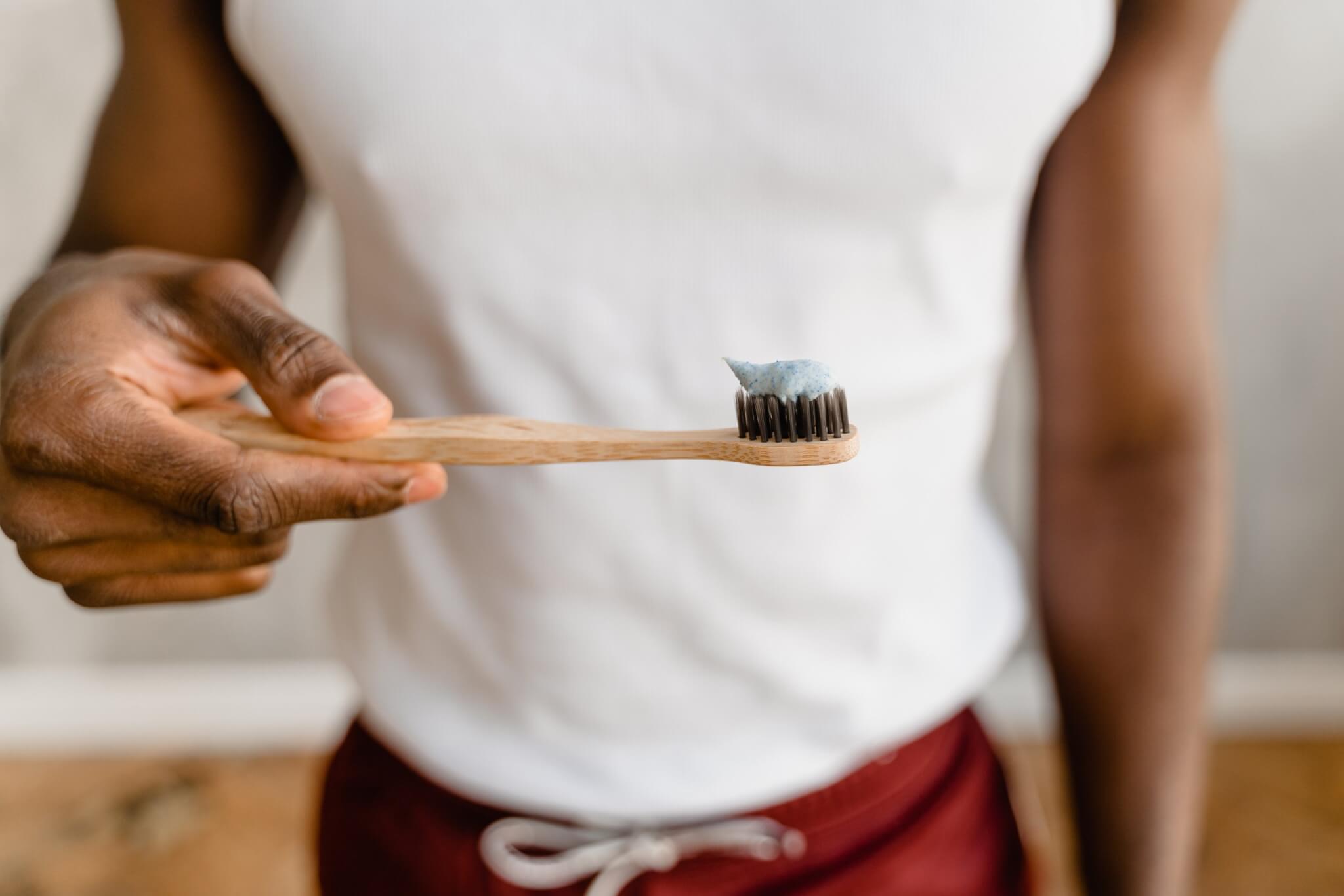
Micro Habits: Following the Path of Least Resistance
Did you follow up on your new-year’s resolutions? Big chance you did not. Studies show that the vast majority of our intended habits are doomed to fail. Often we rely too much on unstable factors like motivation and willpower and set the bar too high for ourselves. But even though the mantra “think big or go home” is caved into western society, some famous writers and scientists claim that the opposite is true for the formation of a habit. BJ Fogg – writer of the book Tiny Habits – and Stephen Guise – writer of the book Mini Habits – posit a new strategy: micro habits (as we will call them).
Micro habits are actions that require minimal effort to be completed. Therefore, they bypass the natural resistance that usually accompanies actions that require effort. Think about it, don’t most of our new year’s resolutions fail because at one point we feel resistance to perform them? We rather relax after a hard day’s work than go to the gym. It may sound counterintuitive. But basically, micro habits make you do as much as needed but as little as possible. I will explain.

What is a habit?
According to Wikipedia, habits are routines of behaviour that are repeated regularly, often unconsciously. This can be anything from making breakfast, to nail biting or going to the gym (believe it or not, some people manage to make this a habit). Usually a habitual action is provoked by an external or internal cue. When one detects this cue, the behaviour happens automatically. Like when one wakes up and immediately strolls into the shower upon waking up (time is the cue here), or when one eats chocolate ice-cream upon ending a relationship (sadness is the cue here).
Habits have been a hot topic for a while now both within psychology and in society. We all try to develop positive habits that evolve around sports, socializing and intellectual pursuit. At the same time, we try to get rid of bad habits that evolve around an unhealthy lifestyle. For this article, we will distinguish between three kinds of habits. Firstly, we have the group of habits that we will call the unnoticed habits. These are so hardwired in our brains that we don’t even think about performing them, we just do it. Always tying your left shoelace first, for example. Or going to the toilet (instead of randomly urinating whenever you feel like it). Secondly, we have bad habits. Quite self-explanatory, like smoking or nail biting. The third category is the one we will focus on in this article, good habits. Habits we try to integrate into our lives and that require hard work to do so – like working out and reading.
How Are Habits Formed in the Brain?
Basal Ganglia
One thing you need to know about the brain is that it is lazy. And what it basically does all day is reproducing a lot of existing neural pathways. So for a new or better habit to be formed, a new neural pathway needs to be developed. Until then, your basal ganglia – the part of the brain that repeats existing patterns and is associated with motor movements, procedural learning, routine behaviour – will do its thing. Because the basal ganglia tends to prefer neural pathways that are already established, it is hard to develop new pathways (and thus habits) that concern related behaviours. Like when the habit to watch TV after work is more hardwired than going to the gym. So in conclusion, repeating behaviour is necessary to form habits (duuh no sh*t sherlock). But because your brain (at least the basal ganglia) tends to prefer older behaviours, you need to use smart strategies to trick your brain.
Prefrontal Cortex
The prefrontal cortex is the part of your brain that is responsible for abstract reasoning and self-control. It overrules the basal ganglia when it wants to go back to its old ways (which in some cases we don’t like). The prefrontal cortex interferes when you are craving chocolate, but your “higher goal” is to lose weight. “Hey stop it you basal ganglia, I want to eat healthy”, is basically what happens then. A term for this is willpower, which we will come back to later.

Is Motivation Needed to Form a Habit?
Motivation is the process that initiates and guides goal-oriented behaviour. It motivates you (badum tsss) to accomplish what you want. Whether it may be writing an essay or running a marathon. We distinguish between short-term goals – like writing the essay – and long-term goals – running the marathon. To establish a long-term goal, one needs to perform a certain act on a regular basis for a longer period of time (building a habit). Imagine running a marathon without the right preparation. The problem with motivation however, is that it’s erratic – meaning it changes over time – and mood based. Therefore, we cannot expect to be constantly motivated to reach all our long term goals. Of course there are exceptions to this, but in general, motivation decreases over time.
This can be explained by the fact that it is strongly influenced by the amygdala, the part of the brain that regulates emotions. This means that when we feel depressed, our motivation to establish things may vanish. This is why depressed individuals often report low motivation. If we were to only use motivation as the leading source of habit forming, habits would never be formed. Chances are you find yourself binge eating chocolate on the couch while simultaneously skipping your intended work-out, instead of keeping to your goals.
How Does Willpower Work?
But luckily, humans are not only guided by motivation to establish goals. Imagine, staying in bed every time we wake up with no motivation to do anything or what-so-ever. Keeping a job would be impossible. To solve this problem people have willpower. Willpower is the ability to resist immediate desires that are not in line with our long-term goals. It is mostly attributed to our prefrontal cortex, the part of the brain that is involved in self-control. So in case of our new year’s resolution to lose weight, willpower prevents us from relapsing into unhealthy habits. Willpower is there to help us when motivation abandons us.
But if we overrule our short term desires over our long term goals for too long, willpower can be depleted. We call this ego depletion, and when this happens, relapses are waiting around the corner. Ego depletion occurs when we set a goal or habit for ourselves that is very difficult to achieve. Let’s say you’re a little overweight but you plan to run 10 kilometers at least 5 times a week. You are motivated for the first few runs, but after the first two runs you already start looking up to it. Motivation decreases, and you need your prefrontal cortex to take over to secure your goal. Willpower takes over, but even willpower cannot make you do something you find dreadful for a longer period of time, and it will deplete. This is where micro habits come into play.
What Are Micro Habits?
Okay, back to the core of this article: micro habits. According to Stephen Guise and BJ Fogg, the “founders” of this tactic, the brain is a lazy organ. This means it operates on its default mode with as little energy as possible, we’ll call this the lazy brain hypothesis from now on. The reason for this is found in the second law of thermodynamics, which states that all systems move towards a state with the least amount of energy consumption. If we translate this to our brains, it means our brain will take the path of least resistance when given the opportunity (the least energy consumption). Because we are so lazy, motivation and willpower often are insufficient. Again, when goals are hard to attain, you can’t rely on feelings of motivation to get you there. Because feelings change. Therefore, make your habit so small that motivation is not an excuse not to perform the act, and slim down the chances of your willpower to get depleted. Hence, micro habits.
How did Stephen Guise “Invent” Micro Habits?
Let’s start with an example Stephen Guise loves to use in his book Mini Habits. The example of a single push up. After years of failures in working out and losing weight, Guise tried a different approach. He agreed with himself on a challenge: doing 1 push up for 100 consecutive days. Guise argued that this one movement was of such little effort, that no amount of willpower or motivation was needed. Also, Guise argued, as Isaac Newton said: an object in movement keeps moving. So once you’re doing that single push up, chances are you keep doing push ups. Because if you think about it, isn’t the hardest thing about working out starting the motion?

I hear what you’re thinking! But how is one push-up a day going to help me get where I want to be. Of course you’re not getting that killer six pack you want. But you will not get a killer six pack if you stop every time you’re a few weeks into your new training regiment either. Key is to increase your “dosage” slowly, when you feel like you’re secure enough to perform an action everyday. Guise increased his dosage from doing one push-up to going to the gym three times a week. Which he accordingly only could do after more than 60 days of doing a single push-up, because only then he had felt like working out had become a habit. Take away message in this case is: don’t try to make a habit perfect, just practice.
How long does it take for a habit to be formed?
Many theories exist on how long it takes for a habit to be formed. Maxwell Maltz, a famous plastic surgeon from the 1950’s, observed that it took most of his patients 21 days to get used to their new appearance (for example their faces after a nose job). A myth was born, every self-proclaimed self-help guru such as the likes of Tony Robbins have used the number as the golden rule of habit forming. However, scientists now-a-days agree that it can take anywhere from 18 to 254 days. Depending on the habit. And if you ask me, not many habits are formed in 18 days.
From a brain and behaviour perspective, habits are not more than neural pathways that gain force by repeating them over and over again. Research showed that behaviours people consider habitual lead to less emotional arousal than new behaviours. This is a good thing because it excludes the erratic part of motivation. Micro habits are so easy to complete, that finding an excuse not to complete will probably cost more effort than the action itself. Which is why the 18 to 254 day milestone is much easier to accomplish, and neural pathways are more easily established.

What Are the 5 Ideas Behind Micro Habits?
- Doing something a little bit is always much better than doing nothing.
- Doing a little bit every day is better than doing a lot on one day.
- The main reason our habits usually fail is because of the strategies we use, and not due to our own failure.
- When you invest in yourself in fitness and health, chances are you will develop more sustainable habits in other areas.
- When you manage to sustain habits in the long run, this may have positive effects on your self-esteem and feelings of self-efficacy.
What Are Examples of Micro Habits?
- Want to start reading more: read 2 pages a day. Again, an object in motion keeps moving. If you’re down 2 pages, chances are you will read more.
- Want to start running: start running 100 meters a day. Newton’s Law would dictate that once you’re running, chances are you do not stop after 100 meters. But then again, it’s okay if you do!
- Want to write a book, but you suffer from lack of motivation or writers block now and then: Write 50 words every day. Chances are you will write more. This is how Stephen Guise wrote his book Mini Habits.
- Want to practice gratitude: give yourself one compliment every day. How hard can it be?
If you want to learn more about behavioral insights, read our blog or watch 100+ videos on our YouTube channel!
About Neurofied
Neurofied is a behavioral science company specialized in training, consulting, and change management. We help organizations drive evidence-based and human-centric change with insights and interventions from behavioral psychology and neuroscience. Consider us your behavioral business partner who helps you build behavioral change capabilities internally.
Since 2018, we have trained thousands of professionals and worked with over 100 management, HR, growth, and innovation teams of organizations such as Johnson & Johnson, KPMG, Deloitte, Novo Nordisk, ABN AMRO, and the Dutch government. We are also frequent speakers at universities and conferences.
Our mission is to democratize the value of behavioral science for teams and organizations. If you see any opportunities to collaborate, please contact us here.
References
Clear, J. (2018). Atomic Habits: The life-changing million copy bestseller. Random House.
Clear, J. (2018), How long does it take to form a new habit (backed by science), James Clear’s Website, https://jamesclear.com/new-habit
Fogg, B. J. (2019). Tiny habits: The small changes that change everything. Eamon Dolan Books.
Guise, S. (2013). Mini habits: Smaller habits, bigger results. Selective Entertainment LLC.
Yin, H. H., & Knowlton, B. J. (2006). The role of the basal ganglia in habit formation. Nature Reviews Neuroscience, 7(6), 464-476.
Neal, D. T., Wood, W., & Drolet, A. (2013). How do people adhere to goals when willpower is low? The profits (and pitfalls) of strong habits. Journal of Personality and Social Psychology, 104(6), 959.
Trafton, A.(28 october 2012). How the brain controls our habits, MIT NEWS, https://news.mit.edu/2012/understanding-how-brains-control-our-habits-1029#:~:text=Habits%20are%20behaviors%20wired%20so,that%20we%20perform%20them%20automatically.&text=A%20new%20study%20from%20MIT,on%20at%20a%20given%20time.
